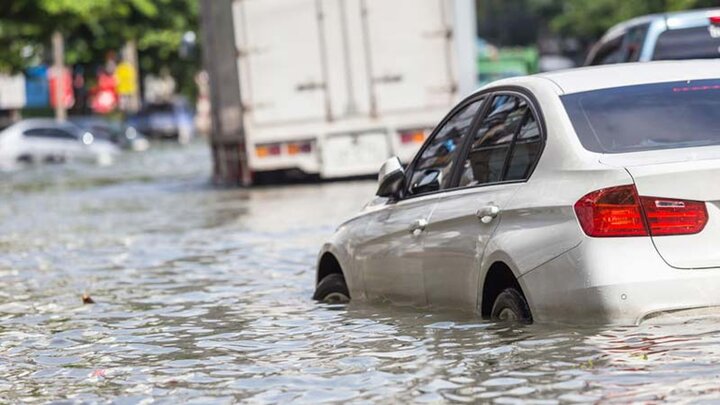Flooding above the door sill can cause damage to the car, and in the case of complete flooding, the damage may be nearly irreparable.
Flooded at the door sill
In the event of water flooding up to the door sill, the car can still function without much impact on its performance. At this point, it’s essential to thoroughly clean the car inside out, ensuring it’s dry to prevent bacteria and mold growth.
Flooding past the door sill
If the water floods past the door sill, over half of the wheel or reaches the seat level, there’s a high likelihood that several car components have been submerged, no longer functioning optimally. Drivers can prevent further damage by not opening the doors until reaching a safe location. If left submerged for an extended period, water will infiltrate the car’s interior.
In this situation, the car’s electrical systems may be damaged. Even if the engine hasn’t been submerged, the cost and time to repair the car’s electrical systems are high. That’s why some insurance companies consider a car completely flooded as a total loss.

Additionally, the type of water flooding determines the extent of damage to the car. The car will suffer more severe damage if it’s flooded with saltwater, as salt accelerates metal corrosion and is challenging to clean once it has penetrated the car’s components.
Complete submersion in water
According to experienced mechanics, if a car is entirely submerged in water, there’s a high probability it will be completely damaged, and restoring its original performance would be difficult, even with high repair costs.
The adverse effects of car flooding
Driving in flooded areas can lead to unpredictable effects, even when the car only wades in water but hasn’t been fully submerged. The most common issues involve electrical system malfunctions, water seeping into circuits, causing malfunctions in the car’s computer-controlled functions or damaging electronic components. If water persists for a long time, it can cause rust in the car’s electrical circuits, leading to more severe issues.
Mechanical failures in the car are another consequence. When passing through deep water, water entering the air intake can cause hydrolock, resulting in severe engine damage. Moreover, water can infiltrate parts near the car’s underbody, such as connections, joints, stabilizer bars, and differentials, leading to lubrication removal, making these parts more susceptible to corrosion if not maintained promptly.
Inside the submerged car, wet carpeting, seats, fabric/leather details create an ideal environment for mold and bacteria, causing discomfort or irritation to passengers inhaling these conditions. Finally, continuous water submersion can easily cause rusting on the car’s body, which, if left untreated, can spread.
To avoid the consequences of car flooding, drivers should refrain from driving in adverse weather conditions. If possible, avoid traveling through flooded areas. In unavoidable circumstances where the car enters a flooded zone, move the vehicle to safety and seek rescue assistance.












